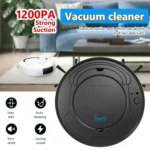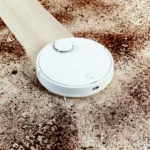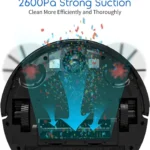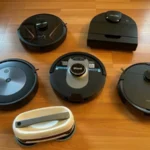Are you tired of your smart vacuum cleaner running out of battery in the middle of cleaning? Not only is it frustrating, but it can also waste precious time and hinder the productivity of your cleaning routine. Fortunately, by understanding the proper charging practices, you can extend the battery life of your smart vacuum cleaner and ensure that it performs at its best for a longer period of time. In this guide, we will dive into the factors that affect the battery life of these devices and provide step-by-step tips for charging your smart vacuum cleaner the right way. By following these practices, you can enjoy a more efficient and effective cleaning experience while prolonging the life of your device. So, let’s get started!
Understanding the Battery Life of Smart Vacuum Cleaners
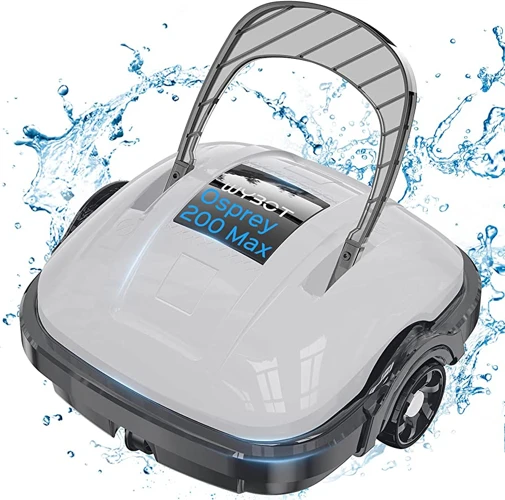
If you own a smart vacuum cleaner, one of the most important things you should know is how to properly take care of its battery. Understanding the battery life of your smart vacuum cleaner can help you extend its lifespan and avoid costly replacements. In this section, we will delve deeper into how smart vacuum batteries work, factors that affect battery life, and the expected lifespan of these batteries. By the end of this section, you will have a better understanding of how to take care of your smart vacuum cleaner’s battery and prolong its lifespan. For more information about smart vacuum charging cycles, take a look at our smart vacuum cleaner charging cycle guide.
How Smart Vacuum Batteries Work
Smart vacuum batteries operate using rechargeable Lithium-ion (Li-ion) or Nickel-metal hydride (NiMH) batteries, which provide an efficient and durable power supply to keep your vacuum clean home. Smart vacuum batteries deliver high voltage and stable power output, making the cleaning job easier and less time-consuming. Here’s a table describing the differences between the two types of batteries:
| Battery Type | Advantages | Disadvantages |
|---|---|---|
| Lithium-ion (Li-ion) battery | Longer battery life, Lightweight and small, More efficient at holding charge, No “memory effect”, which means batteries don’t need to be fully discharged before recharging | Expensive than other types, susceptible to overheating if not used correctly, some Li-ion batteries can’t be replaced, only overcome by replacing the vacuum altogether or attempting a very dangerous re-cell. |
| Nickel-metal hydride (NiMH) battery | More economical than Lithium-ion battery, available for replacement, sufficient voltage and capacity for most small electronics. | Self-discharges when not in use, affected by “memory effect,” needs to be fully discharged before recharging, heavier than Li-ion batteries, affected by temperature changes |
Both types of batteries perform well and have unique advantages and disadvantages, so it’s important to understand which type your vacuum uses and how it works.
Another thing to keep in mind is that smart vacuum batteries have controllers that manage their voltage and prevent overcharging, over-discharging, and over-current, which helps extend their lifespan. However, it’s still essential to use proper charging practices and keep an eye on the battery’s condition regularly.
To learn more about how to extend your smart vacuum cleaner battery life through proper charging practices, check out our article on smart vacuum charging advice and tips. Before charging or using your vacuum, make sure you’re using the original charger provided by the manufacturer, and store the vacuum correctly when not in use.
Factors Affecting Battery Life
The battery life of smart vacuum cleaners is affected by several factors. Understanding these factors can help you maintain and extend your smart vacuum cleaner’s battery life. Here are the factors to consider:
- Usage patterns: The more frequently you use your smart vacuum cleaner, the more often you need to charge its battery. Heavy usage patterns can cause the battery to drain quickly, reducing its overall lifespan.
- Battery capacity: The battery capacity of smart vacuums can vary, and larger capacities can provide longer run times. Models with smaller batteries may need to be charged more often or run on lower power settings to conserve battery life.
- Battery quality: The quality of the battery can affect its lifespan. Cheap or low-quality batteries may not last as long or hold a charge as well as higher quality batteries.
- Temperature: High temperatures can damage the battery and reduce its overall lifespan. Charging the battery in a hot environment or leaving the vacuum in a hot car can cause damage. Similarly, storing the vacuum in a cold environment can also harm the battery.
- Humidity: High humidity can also harm the battery. It’s essential to store the smart vacuum in a dry place to avoid damage to the battery.
- Charging practices: Charging the vacuum battery correctly is vital for extending its lifespan. Incorrect charging practices, such as overcharging or charging in the wrong environment, can shorten the battery’s lifespan.
- Obstacles and surface types: The surface type and amount of obstacles the vacuum encounters can impact how much power it uses, affecting battery life. Carpets, for example, require more power to clean than hardwood floors, using more battery power in the process.
Properly maintaining your smart vacuum cleaner can help address these factors and extend the battery life. By using the right suction levels, being mindful of obstacles and tight spaces, regular cleaning, and proper storage, you can increase the lifespan of the battery. Additionally, avoiding common charging mistakes, charging the battery correctly, and exploring alternative charging options can also help extend battery life. Check out these storage tips to learn more about how to store your smart vacuum correctly. You can also explore alternative charging options and avoid common charging mistakes to keep your smart vacuum running smoothly.
Expected Lifespan of Smart Vacuum Batteries
Smart vacuum batteries are a crucial component that determines how well and efficiently the vacuum performs. While there are many factors that affect battery life, it is essential to understand the expected lifespan of smart vacuum batteries.
1. Standard battery life: On average, a smart vacuum cleaner battery’s standard lifespan is between 2 to 3 years. However, this estimate changes depending on how often you use the device and how well you maintain it.
2. Charge cycles: Smart vacuum batteries have a finite number of charge cycles, which usually range from 300 to 500 cycles. Once the battery reaches this limit, it becomes less efficient and starts to lose its overall capacity.
3. Battery capacity: Over time, smart vacuum batteries lose their capacity, which means they can’t hold a charge for as long as they used to. Once a battery has reached 80% of its original capacity, it may be time to replace it or start considering a new smart vacuum cleaner.
4. Battery technology: The lifespan of smart vacuum batteries also depends on the type of battery technology used. Lithium-ion batteries are the most common battery type used in modern smart vacuum cleaners, with a standard lifespan of 2 to 3 years.
It’s crucial to understand that the expected lifespan of smart vacuum batteries is just an estimate and can vary from device to device. Some factors could impact the battery’s lifespan, such as the frequency of use, charging habits, and overall maintenance of the smart vacuum cleaner.
To extend your smart vacuum cleaner’s battery life, it’s essential to adopt proper charging practices, as discussed in detail in previous sections. By doing this, users can help prolong the battery’s lifespan, ensure optimal vacuum performance, and avoid the added cost of having to purchase a new battery or vacuum cleaner.
It’s very important to follow the charging instructions mentioned and the proper maintenance steps to keep the device in good condition for a long period of time. If you want to explore further about how to charge your smart vacuum cleaner properly, you can read our detailed article on “How to Charge Your Smart Vacuum Battery”.
Proper Charging Practices for Smart Vacuum Cleaners
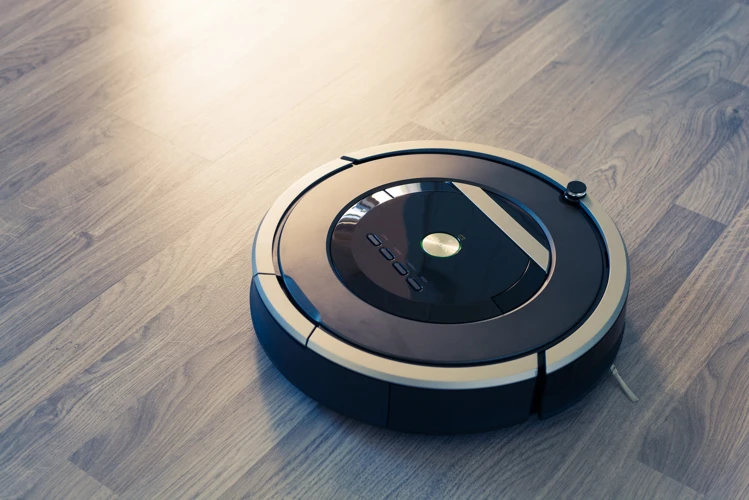
Ensuring your smart vacuum cleaner has a fully charged battery is essential for keeping your home clean and tidy. While it may seem like a small task, proper charging practices can greatly affect the lifespan of your vacuum’s battery. To help you keep your smart vacuum cleaner running smoothly, we’ve compiled a list of tips and tricks for charging your vacuum’s battery correctly and consistently. Read on to learn how to extend the battery life of your smart vacuum cleaner.
Charge Correctly and Consistently
One of the most important aspects of extending the battery life of your smart vacuum cleaner is to charge it correctly and consistently. Charging the battery correctly means following the manufacturer’s instructions and using the charger that came with the vacuum. Using third-party chargers or charging cables can damage the battery and even cause it to explode.
To ensure that you are charging your smart vacuum cleaner correctly, here are some tips to keep in mind:
| Tip | Description |
| Use the Right Charger | Always use the charger that came with your smart vacuum cleaner. Using a third-party charger can damage the battery and cause it to malfunction. |
| Charge After Every Use | Try to charge your smart vacuum cleaner after every use. This will keep the battery at a consistent level and prevent it from fully draining. |
| Don’t Charge Too Often | While it’s important to charge your smart vacuum cleaner after every use, avoid charging it too often. Overcharging can be just as damaging to the battery as undercharging. |
| Charge to Full Capacity | Make sure to charge your smart vacuum cleaner to its full capacity. This will ensure that you get the maximum battery life out of each charge. |
| Don’t Overuse the Turbo Mode | Avoid using the turbo mode of your smart vacuum cleaner too often. It can drain the battery faster than the normal mode, which could reduce the life of the battery in the long run. |
By following these tips, you can ensure that you are charging your smart vacuum cleaner correctly and consistently. This will help to extend the life of your battery and ensure that your vacuum cleaner is always ready to use when you need it.
Avoid Overcharging
It’s important to remember that overcharging your smart vacuum cleaner’s battery can lead to decreased battery life and potentially permanent damage. Overcharging occurs when the battery is left connected to the charger even after reaching a full charge. To avoid overcharging, follow the manufacturer’s recommended charging time and avoid leaving the vacuum cleaner plugged in overnight or for extended periods of time.
To ensure you’re not overcharging, keep an eye on the battery indicator light on your vacuum cleaner. Once the battery is fully charged, unplug it and store it in a cool and dry place. An overcharged battery can cause the battery to overheat and can even cause a fire.
To help prevent overcharging, consider using a smart plug with a timer function. This will automatically turn off the charging process once the set time has elapsed.
Here’s a helpful table summarizing the do’s and don’ts of avoiding overcharging your smart vacuum cleaner’s battery:
| Do’s | Don’ts |
|---|---|
| Follow manufacturer’s recommended charging time | Leave the vacuum cleaner plugged in overnight |
| Unplug the vacuum once battery is fully charged | Leave the vacuum plugged in for extended periods of time |
| Store the vacuum in a cool and dry place | Charge the vacuum with an improper charger |
By following these proper charging practices, you can ensure your smart vacuum cleaner’s battery lasts as long as possible and remains in good condition for years to come.
Charge in a Cool and Dry Place
One important factor in maximizing the battery life of your smart vacuum cleaner is to ensure that you always charge it in a cool and dry place. Charging your vacuum cleaner in extreme temperatures or in a humid environment can cause the battery to degrade more quickly, ultimately shortening its lifespan.
To help you optimize the charging process, we have compiled a detailed table with some dos and don’ts when it comes to charging your smart vacuum cleaner:
| DO | DON’T |
|---|---|
| Charge your vacuum cleaner in a cool, dry place. An ideal temperature range for charging is between 32°F and 95°F. High temperatures can cause the battery to degrade faster, while excessively low temperatures can also impact its performance. | Charge your vacuum cleaner in a humid environment, such as a bathroom, as this can cause the battery to degrade faster. |
| Store your vacuum cleaner and its charging station in a cool, dry place. This will also help to ensure that the battery is at the optimal temperature for charging when you need it. | Store your vacuum cleaner and its charging station in a hot, humid or damp environment, such as a basement or garage. |
| Avoid charging your vacuum cleaner in direct sunlight or near a heat source. Direct sunlight can cause the battery to overheat and impact performance, while charging your vacuum cleaner near a heat source can also cause the battery to degrade faster. | Charge your vacuum cleaner in a location that is exposed to direct sunlight or near a heat source, such as a radiator. |
By adhering to these best practices, you can help ensure that your smart vacuum cleaner battery lasts as long as possible, saving you money and time in the long run. Remember, always use the right charging cable and follow the manufacturer’s instructions for charging to ensure the best performance and longevity.
Don’t Let the Battery Fully Drain Before Charging
As tempting as it can be to use your smart vacuum cleaner until the battery is fully drained, doing so is not recommended. In fact, it’s one of the worst practices for prolonging the lifespan of your battery.
What Happens When You Drain Your Battery Completely?
First of all, it’s important to understand what happens to your battery when you let it drain completely. Lithium-ion batteries, which are typically used in smart vacuum cleaners, are designed to be charged and discharged partially. When you fully drain the battery, you put a lot of strain on its cells.
When a battery is completely discharged, it can be more difficult to recharge. Specifically, the battery may enter a state known as “deep discharge,” where the voltage drops below a critical level. When this occurs, the battery can be difficult to recharge, and its overall lifespan can be shortened.
How to Avoid Fully Draining Your Battery
To avoid fully draining your smart vacuum cleaner battery, you should aim to recharge it when it still has some charge left. Ideally, you want to charge the battery when it has somewhere between 20% and 80% charge remaining. This helps ensure that the battery is not fully drained, which can help extend its lifespan.
To make sure you don’t fully drain your battery unintentionally, you can keep an eye on the battery’s charge level using the smart vacuum cleaner’s app or display (if it has one). Additionally, you can set reminders or alarms to help prompt you to charge the vacuum when needed.
Tips for Charging Your Smart Vacuum Cleaner Battery
To properly charge your smart vacuum cleaner battery, you should follow these tips:
| Tip | Description |
|---|---|
| Charge frequently | Charge your vacuum regularly, before the battery gets too low. |
| Avoid overcharging | Don’t leave your vacuum charging for extended periods of time. |
| Charge in the right environment | Charge your vacuum in a cool and dry place, away from direct sunlight. |
| Use the right charger | Make sure you are using the charger that came with your vacuum. |
Conclusion
You should avoid fully draining your smart vacuum cleaner battery if you want to prolong its lifespan. Instead, aim to charge the battery when it still has some charge left, ideally between 20% and 80%. Additionally, follow the tips for charging your vacuum correctly to ensure that its battery stays healthy for as long as possible.
Other Tips for Extending Smart Vacuum Cleaner Battery Life
When it comes to maintaining the longevity of your smart vacuum cleaner, proper charging practices are just the beginning. There are a variety of other tips and tricks you can employ to keep your vacuum in tip-top shape and extend its battery life. From regular cleaning of the dustbin and filter to being mindful of obstacles and tight spaces, incorporating these additional practices into your cleaning routine can make a big difference in how long your vacuum operates efficiently. Keep reading to learn more about how you can get the most out of your smart vacuum cleaner.
Clean the Dustbin and Filter Regularly
Regularly cleaning your smart vacuum cleaner’s dustbin and filter is crucial for maintaining its performance and extending its battery life. Over time, debris and dust can accumulate in the dustbin, leading to reduced suction power and overall cleaning efficiency. Meanwhile, a clogged filter can cause the motor to work harder, resulting in faster battery drain and potential damage to the vacuum’s internal components.
How often should you clean your smart vacuum’s dustbin and filter?
This depends on how frequently you use your vacuum, as well as the size of your living space and the amount of dust and debris present. As a general rule of thumb, however, it’s recommended that you clean the dustbin and filter after every use, especially if you have pets or suffer from allergies.
Cleaning the Dustbin
To clean the dustbin, simply remove it from your smart vacuum and empty its contents into the trash. Use a soft brush or cloth to wipe down the inside of the dustbin, ensuring that there is no residue left behind. For more thorough cleaning, you can rinse the dustbin under running water and then allow it to air dry completely before reinserting it into the vacuum.
Cleaning the Filter
To clean the filter, first check the manufacturer’s instructions to determine if it is washable. If so, remove the filter from the vacuum and gently rinse it under running water. Use your fingers to remove any excess debris or dust on the filter, taking care not to damage it. Once the filter is clean, allow it to air dry completely before reinstalling it into the vacuum.
Why cleaning the dustbin and filter helps extend battery life
As mentioned earlier, a dirty dustbin and filter can create additional strain on your vacuum motor, leading to faster battery drain and in some cases, potential damage to your device. By regularly cleaning these components, you’re ensuring that your vacuum is operating at optimal levels, which can help extend its lifespan and ensure that you’re getting the most out of your battery.
In the next section, we’ll discuss other tips and tricks for extending your smart vacuum’s battery life, so be sure to keep reading!
| Benefits of cleaning the dustbin and filter | How often to clean it |
|---|---|
| Maintains performance and suction power | After every use, especially for pet owners or those with allergies |
| Prevents potential damage to internal components | At least once a week, depending on usage and living conditions |
| Extends battery life | Regularly, in accordance with manufacturer’s instructions |
Check for Blockages or Clogs
When it comes to extending the battery life of your smart vacuum cleaner, one important but often overlooked factor is checking for blockages or clogs. Not only can blockages affect the suction power of your vacuum, but it can also put unnecessary strain on the battery, causing it to deteriorate faster. To prevent this from happening, make sure to regularly check for blockages or clogs in the following areas:
| Area | How to Check |
|---|---|
| Dustbin | Empty the dustbin after each use and check for any debris that may be stuck, preventing proper airflow. Use a small brush to remove any stubborn blockages. |
| Brush Roll | Turn the vacuum over and inspect the brush roll for any hair or debris wrapped around it. Use a pair of scissors or a brush to remove any blockages. |
| Hoses and Tubes | Remove any hoses or tubes and check for any blockages or clogs. Use a long object like a coat hanger or a brush to remove any debris. |
It’s important to note that failing to check for blockages or clogs can not only reduce the battery life of your vacuum but also lead to a shorter lifespan of the machine itself. By regularly checking for blockages and clogs, you can ensure that your smart vacuum cleaner is running efficiently, therefore prolonging its battery life.
Use the Right Suction Levels
When it comes to using smart vacuum cleaners, it’s important to use the right suction levels for optimal performance and battery life. Using the wrong suction level can cause the vacuum to use more power and drain the battery faster than necessary. That’s why it’s important to understand how to choose the right suction level for your needs.
Low suction level: This setting is ideal for light cleaning tasks and cleaning hard floors such as hardwood, tile and vinyl. It’s also suitable for picking up small debris such as dust and pet hair. Using low suction level reduces the power consumption, which means less battery usage.
Medium suction level: This setting is suitable for regular cleaning tasks, and it can remove small particles and pet hair from carpets and rugs. It also can pick up bigger debris such as pet kibble or cereal. The medium suction level will use more power than the low suction level.
High suction level: This setting is useful for heavy cleaning tasks and cleaning high pile carpets or rugs. But it uses more battery than other modes because of the high suction power.
Using the right suction level for the job will help keep your battery usage to a minimum, which means you can get more cleaning done on a single charge. It’s important to note that some smart vacuum cleaners have an automatic suction mode that changes the suction level automatically depending on the type of floor or debris. If you have this option on your vacuum, make sure that it’s properly configured to work optimally.
By using the correct suction level and having the proper settings, smart vacuum cleaner battery life can be extended.
Be Mindful of Obstacles and Tight Spaces
When using a smart vacuum cleaner, it’s essential to be mindful of any obstacles or tight spaces that the device may encounter. This can help to prevent damage to the vacuum cleaner and avoid unnecessary wear on the battery. Here are some tips to keep in mind:
- Avoid small objects: Small toys, hairpins, and other small objects can easily get stuck in the vacuum cleaner and damage the device. Make sure to pick up any small objects from the floor before running the smart vacuum cleaner.
- Clear electrical cords: Electrical cords can be a hazard for the smart vacuum cleaner, so it’s important to clear them out of the way before starting the device. This can help the vacuum cleaner to move around freely without getting tangled in cords.
- Watch for tight spaces: Tight spaces can be difficult for smart vacuum cleaners to navigate, and the device may get stuck or damage itself trying to move into these areas. Be sure to clear out any tight spaces before using the device, or block them off with barriers or other objects to prevent the device from attempting to move into these areas.
By being mindful of obstacles and tight spaces, you can help to extend the lifespan of your smart vacuum cleaner’s battery and ensure that the device continues to function optimally. So, keep these tips in mind and take the necessary precautions to keep your device running smoothly.
Store the Vacuum Correctly
Properly storing your smart vacuum cleaner is key to maintaining its battery life. Here are some tips to keep in mind:
- Store in a Cool and Dry Place: High temperatures can damage the battery, so it’s important to store your vacuum cleaner in a cool, dry place. Avoid storing it in direct sunlight or near a heat source.
- Remove the Battery: If your vacuum cleaner has a removable battery, it’s a good idea to remove it when storing the vacuum. This will prevent the battery from slowly discharging over time and potentially damaging it.
- Keep the Vacuum Cleaner Clean: Before storing your vacuum cleaner, make sure it’s clean and free from dirt and debris. This will help prevent any damage or blockages from occurring during storage.
- Store in an Upright Position: Storing the vacuum cleaner in an upright position will help prevent any damage to the brushes or rollers. It will also save space and prevent any potential tripping hazards.
- Protect the Vacuum Cleaner: To prevent any scratches or damage during storage, consider using a protective cover or storing it in a box.
By following these tips for storing your smart vacuum cleaner, you’ll not only extend its battery life but also ensure that it’s ready for use when you need it.
Conclusion
In conclusion, taking proper care of your smart vacuum cleaner’s battery is essential for getting the most out of your device. Remember to charge it correctly and consistently, avoiding overcharging and allowing it to charge in a cool and dry place. It is also important not to let the battery fully drain before charging, as this can lead to a reduced lifespan.
In addition to charging practices, other tips such as regularly cleaning the dustbin and filter, checking for blockages or clogs, using the right suction levels, being mindful of obstacles and tight spaces, and storing the vacuum correctly can all contribute to extending the life of your smart vacuum cleaner’s battery.
By incorporating these practices into your routine, you can help ensure that your smart vacuum cleaner is operating at its best and providing optimal cleaning results for years to come. So, be sure to take care of your device and enjoy its benefits for as long as possible.
Frequently Asked Questions
1. Will charging my smart vacuum cleaner overnight damage the battery?
Yes, charging your smart vacuum cleaner overnight can damage the battery by overcharging it, which can shorten its lifespan.
2. How often should I charge my smart vacuum cleaner?
You should charge your smart vacuum cleaner after each use, or at least once a week if it is not being used frequently.
3. Can I use other chargers to charge my smart vacuum cleaner?
No, it is recommended that you use only the charger that came with your smart vacuum cleaner to ensure optimal charging and battery life.
4. Should I let my smart vacuum cleaner’s battery fully drain before charging?
No, it is recommended that you avoid letting the battery fully drain before charging. Instead, charge it before it reaches a low battery level to prolong its lifespan.
5. How can I extend the lifespan of my smart vacuum cleaner battery?
You can extend the lifespan of your smart vacuum cleaner battery by charging it correctly and consistently, avoiding overcharging, and keeping it at a cool and dry location when charging.
6. How often should I clean the dustbin and filter of my smart vacuum cleaner?
You should clean the dustbin and filter of your smart vacuum cleaner after each use to maintain optimal performance and extend the lifespan of the battery.
7. Can I use my smart vacuum cleaner on all surfaces?
It depends on the model and the type of flooring. Consult the manufacturer’s instructions to ensure that your smart vacuum cleaner is suitable for the surfaces you intend to clean.
8. Can I leave my smart vacuum cleaner on charge all the time?
No, avoid leaving your smart vacuum cleaner on charge all the time to prevent overcharging, which can damage the battery.
9. How can I store my smart vacuum cleaner correctly?
You can store your smart vacuum cleaner correctly by keeping it in a cool and dry place, away from direct sunlight and extreme temperatures.
10. How long does the battery of a smart vacuum cleaner last?
The lifespan of a smart vacuum cleaner battery varies depending on the model and usage, but on average it can last up to two years with proper charging and maintenance practices.

